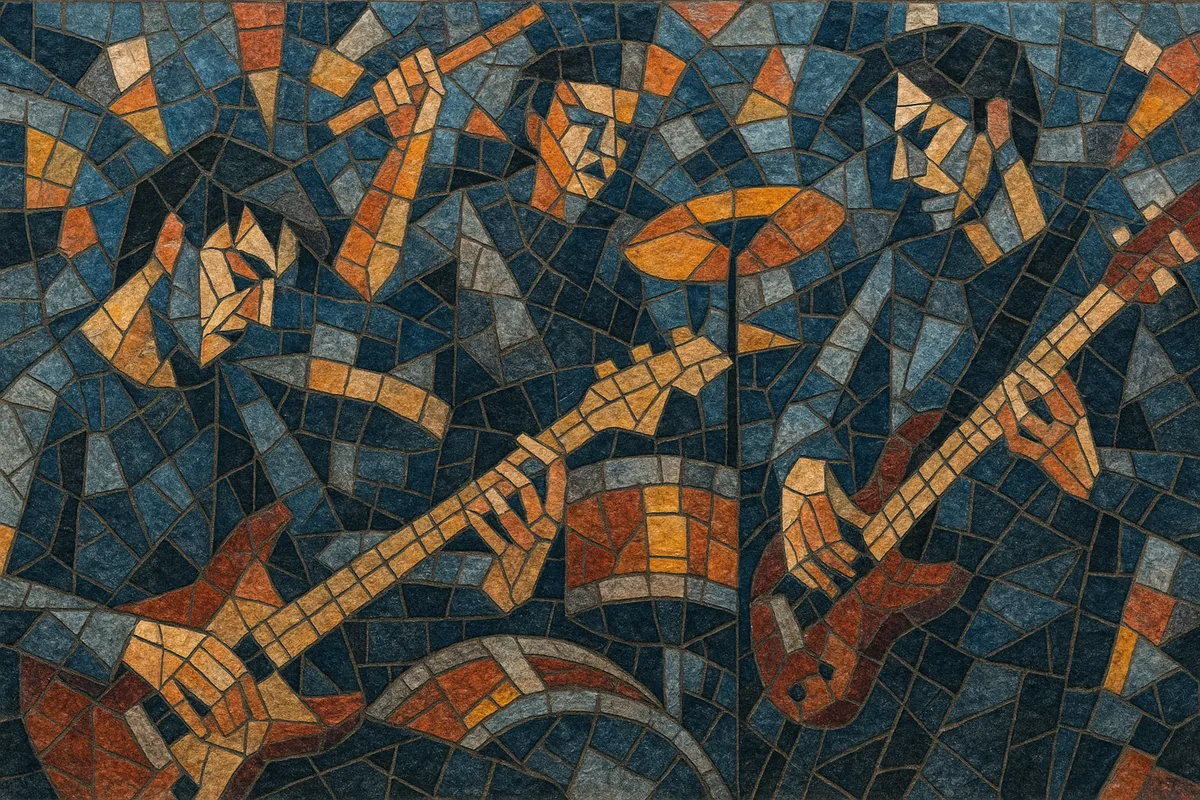Math rock is a subgenre of indie and experimental rock defined by complex, irregular rhythms, sudden dynamic shifts, and angular, interlocking guitar lines.
It frequently employs odd and mixed meters (such as 5/4, 7/8, 11/8), polyrhythms, start–stop figures, and intricate syncopation. Guitars often favor clean or lightly overdriven tones, tapping, and harmonically adventurous voicings over traditional power-chord riffing. Vocals, if present, are usually sparse, textural, or rhythmically coordinated with the ensemble rather than the primary focal point.
Aesthetically, math rock draws from the precision and structural ambition of progressive rock, the urgency of post-hardcore, and the textural curiosity of indie and noise rock, resulting in music that feels both cerebral and visceral.
Math rock coalesced in the United States during the late 1980s, when bands began fusing the precision and structural ambition of progressive rock with the intensity of post-hardcore and the textural experimentation of indie and noise rock. Early touchstones included groups like Slint (whose 1991 record Spiderland became a landmark), Bastro, Breadwinner, and Bitch Magnet, who explored odd meters, staccato dynamics, and non-standard song forms.
The 1990s saw math rock develop clear stylistic markers: metrically intricate drum work, clean yet incisive guitar interplay, and sharp dynamic turns. Don Caballero (Pittsburgh) became a defining act, emphasizing rhythmic labyrinths and instrumental virtuosity. Parallel scenes in Louisville, Chapel Hill, Chicago, and the West Coast featured bands such as Polvo, Rodan/June of 44, Drive Like Jehu, and Shellac, each bringing different shades of aggression, minimalism, and angularity. Independent labels and DIY touring circuits helped the music spread, while overlapping with early post-rock and experimental indie communities.
In the 2000s, a new wave expanded math rock’s vocabulary. Hella and Tera Melos brought hyper-dexterous, exploratory guitar/drum chemistry; Battles fused precision with looping, groove, and electronics, reaching wider audiences. In the UK, TTNG (This Town Needs Guns) and early Foals helped cultivate a melodic, glassy-toned variant. Meanwhile, a thriving Japanese scene (toe, LITE, tricot) emphasized clarity, lyricism, and rhythmic sophistication.
The 2010s broadened math rock’s popularity via internet communities, festivals (e.g., ArcTanGent), and virtuosic, melody-forward acts like CHON and Covet. Cross-pollination with Midwest emo, post-rock, and progressive pop produced more song-oriented formats without abandoning rhythmic complexity. Math rock’s influence became evident in mathcore (the heavier, hardcore/metal-leaning offshoot), as well as contemporary emo and experimental indie.
Math rock’s legacy lies in its re-centering of rhythm as a primary expressive tool within rock, inspiring generations of bands to treat meter and form as creative playgrounds while integrating finesse, clarity, and DIY inventiveness.


